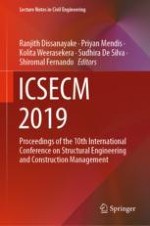2021 | OriginalPaper | Chapter
Damage Assessment of Geopolymer Aggregate Concrete Using Numerical Modeling
Authors : C. Seneviratne, D. Robert, C. Gunasekara, M. Wimalasiri, D. Law, S. Setunge
Published in: ICSECM 2019
Publisher: Springer Singapore
Activate our intelligent search to find suitable subject content or patents.
Select sections of text to find matching patents with Artificial Intelligence. powered by
Select sections of text to find additional relevant content using AI-assisted search. powered by
